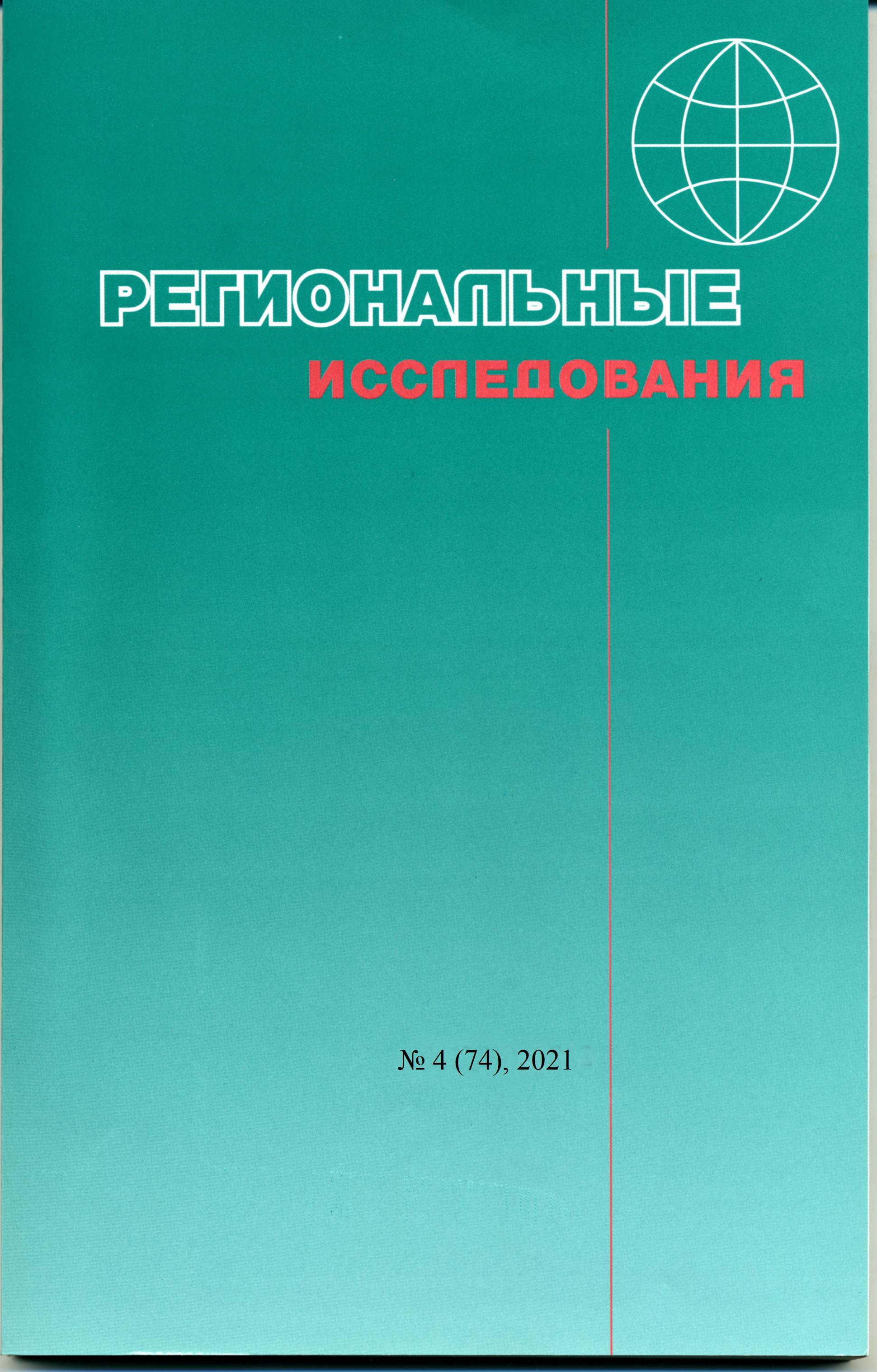Vardomskiy L.B. Spatial dimension of Eurasian integration
DOI:
https://doi.org/10.5922/1994-5280-2021-4-2Keywords:
Eurasian integration, institutions, EAEU countries, Russia, social differences, international transport corridors, development coordinationAbstract
The institutions of Eurasian integration were formed on the basis of the experience of other integration associations, but taking into account the specifi of the participating countries. The article assesses the infl of spatial factors on the EAEU, which has not yet been suffi studied, although it is very noticeable. Among these factors are the sharp dominance of Russia in the EAEU, large social and economic differences at the country and regional level, the predominance of energy and its infrastructure in the interaction of the participating countries, the deep situation in Eurasia. The existing institutions are mainly aimed at ensuring freedom for mutual trade and cross-border movement of the population. This has mainly benefi the capital cities, which are the main part of mutual trade and labor migrations. At the same time, they did not stimulate the development of industrial and technological cooperation of the participating countries. The Eurasian integration does not yet contribute to the weakening of the uneven spatial development in the participating countries, which fuels skepticism about the EAEU and increases internal political instability. The recently adopted “Strategic directions for the development of the Eurasian Economic Integration until 2025” imply the adjustment of integration institutions in the direction of strengthening the elements of coordination and joint design in them. This will make it possible to reduce the negative impact of the intra-continental situation and more actively use the potential of the central position in Eurasia. The system of measures of joint economic policy presented in them creates a new platform for sustainable interaction between states, national communities and business for more effective use of the Eurasian space occupied by them.
References
Безруков Л.А. Континентально-океаническая дихотомия в международном и региональном развитии. Новосибирск: Академическое изд-во «Гео», 2008. 369 с.
Вардомский Л.Б. Постсоветская интеграция и экономический рост нового приграничья России в 2005–2015 гг. // Пространственная экономика. 2017. № 4. C. 23–40.
Вардомский Л.Б., Тураева М.О. Национальные интересы и динамика евразийского интеграционного процесса // Мир перемен. 2021. № 2. С. 141–157.
Гурова И.П., Ефремова М.В. Региональная торговля на пространстве СНГ: предпосылки для производственной кооперации // Вопросы экономики. 2012. № 6. С. 110–126.
Днепро-Двинский регион в зеркале социологии / Под ред. А.С. Кузовко. Смоленск: Изд-во СмолГУ, 2019. 141 с.
Евразийская интеграция в турбулентном мире / Под ред. Л.Б. Вардомского. СПб.: Изд-во Алетейя, 2019. 288 с.
Лисоволик Я.Д. Евразийский экономический союз и АСЕАН: оценка взаимодополняемости // Международные процессы. 2017. Т. 15. № 3. С. 46–54.
Маергойз И.М. Территориальная структура народного хозяйства и некоторые подходы к ее исследованию в социалистических странах в свете социалистической экономической интеграции // Вестн. Моск. ун-та. Сер. 5. Геогр. 1975. № 4. С. 3–21.
Михеева Н.Н. Пространственные аспекты региональных экономических прогнозов / Под.ред. А.А. Широва. М.: Арктик Принт, 2021. 120 с.
Переход к рыночной экономике и структурные реформы в государствах-членах Евразийского экономического Союза / Под ред. И.В. Пилипенко. СПб.: Наукоемкие технологии, 2019. 975 с.
Региональная политика стран ЕС / Под ред. А.В. Кузнецова. М.: ИМЭМО РАН, 2009. 230 с.
Региональная политика: зарубежный опыт и российские реалии / Под ред. А.В. Кузнецова, О.В. Кузнецовой. М.: ИМЭМО РАН, 2015. 137 с.
Россия и постсоветские страны: вопросы экономических отношений / Под ред. А.Г. Пылина. М.: ИЭ РАН, 2021. 232 с.
Российское пограничье. Вызовы соседства / Под ред. В.А. Колосова. М.: ИП Матушкина И.Н. М., 2018. 562 с.
Стратегия развития приграничных территорий: традиции и инновации / Под ред. Л.И. Попковой, Ц. Мадры, Л.Б. Вардомского. Курск: Курск.гос. ун-т, 2018. 130 с.
Стратегия развития экономики Беларуси: вызовы, инструменты реализации и перспективы: сборник научных статей. В 2 т. Т. 2 / Под.ред. В.И. Бельского. Минск: Право и экономика, 2019. 438 с.
Торговая политика России и стран Восточной Азии: поиск путей для взаимовыгодного сотрудничества / Под ред. И.А. Коргун, К.Ф. Сутырина. М.: ИЭ РАН, 2020. 338 с.
Ушкалова Д.И., Вардомский Л.Б. Региональная экономическая интеграция в исследованиях Института экономики РАН // Вестник Института экономики РАН. 2020. № 6. С. 13–29.
Цимбурский В.Л. Геополитика для евразийской Атлантиды // ProetContra. Проблемы глобализации. Осень 1999. С. 141–175.
Шлихтер С.Б. Эльке Э. Территориальные проблемы экономической интеграции стран ЕЭС. Гота, 1986 // Изв. АН СССР. Сер.геогр. 1987. № 4. С. 137–138.
Brakman St., Garretsen H., Van Marrewijk Ch., Oumer F. TheborderpopulationeffectsofEUintegration// Journal of Regional Science. 2012. Vol. 52. № 1. P. 1–20. DOI: 10.1111/j.1467-9787.2011.00752.x.
Niebuhr А., Stiller S. Integration effects in border regions – A survey of economic theory and empirical studies // HWWA Discussion Paper 179. Hamburg, 2002. 30 p.

